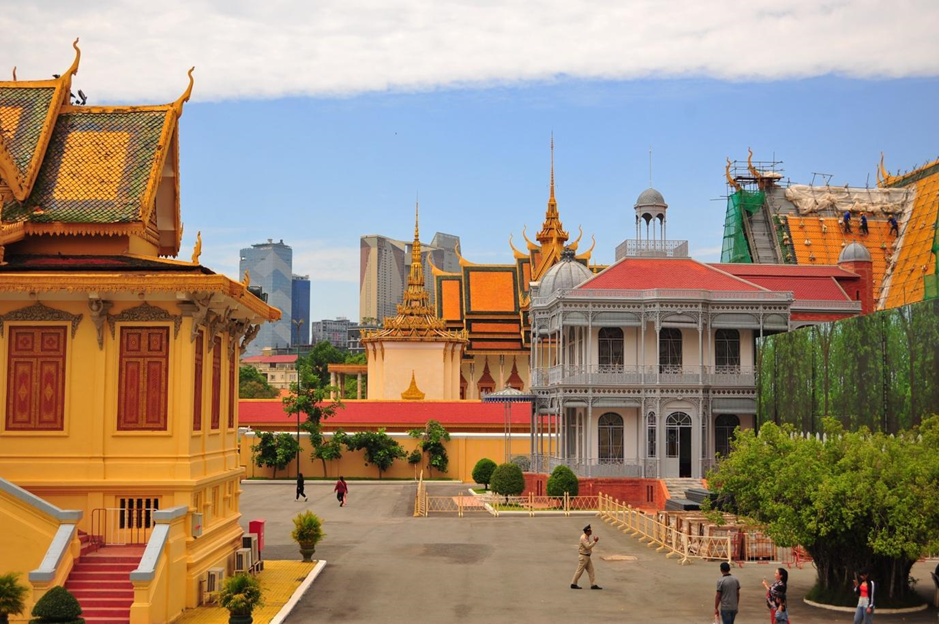Cambodia & Khmer Rouge: The dark story of Tuol Sleng
- Editorial team

- May 19
- 3 min read
The Tuol Sleng genocide museum in Phnom Penh is a grim memorial to one of the darkest chapters in Cambodian history. Built in 1962 as Tuol Svay Prey High School, the site was transformed in 1976 by the Khmer Rouge regime into Security Prison 21 (S-21), a center for the detention, interrogation, torture and extermination of suspected political enemies during their reign from 1975 to 1979.

After the Khmer Rouge evacuated Phnom Penh in April 1975, the regime transformed the school into a prison complex surrounded by electrified barbed wire. Classrooms were transformed into tiny cells and torture chambers, with barred windows to prevent escape. At any given time, S-21 held between 1,000 and 1,500 prisoners, for an estimated total of around 20,000 detainees over the years. Prisoners included former officials, intellectuals, soldiers, monks and even high-ranking Khmer Rouge suspected of disloyalty. Torture was commonplace, and prisoners were forced to confess to fabricated crimes and to implicate family members and associates, who were then also arrested and killed. Most of the prisoners were eventually executed in the nearby Choeung Ek battlefields.
The Khmer Rouge justified the brutal acts committed at Tuol Sleng as necessary measures to protect and advance their revolutionary communist ideology. They saw the prison as a tool for eliminating “enemies of the revolution” - anyone suspected of espionage, disloyalty or counter-revolutionary activities. This justification was rooted in extreme paranoia and a ruthless pursuit of ideological purity, where even high-ranking party members were not immune from suspicion and purges.
Pol Pot and the Khmer Rouge leadership believed that it was better to arrest and eliminate many innocent people than risk letting a single “enemy” go free. Prisoners were forced to confess to fabricated crimes, often under torture, to justify their imprisonment and execution. Internal regime documents and directives, allegedly personally supervised by Pol Pot, stipulated that prisoners had to know they were going to die, but had to confess fully before execution to serve the revolutionary cause. This reflected a cold, bureaucratic approach to mass murder masquerading as revolutionary justice.
At Tuol Sleng, the Khmer Rouge sought to destroy not only visible enemies, but also “invisible enemies” - those who resisted their mental and ideological control. The regime's security rules imposed strict obedience and silence, emphasizing that any dissent was tantamount to treason. The Khmer Rouge presented these actions as a purification of the nation in order to build a new social order, justifying torture, forced confessions and executions as evils necessary to the pursuit of their radical vision.
This ideological justification served to legitimize the horrific abuses committed at Tuol Sleng, where some 20,000 people were imprisoned, tortured and, for the most part, executed between 1976 and 1979. The regime's paranoia and obsession with control led to widespread purges, with the prison functioning as a central instrument of terror to impose absolute loyalty to the Khmer Rouge revolution.
Only 12 known prisoners survived the horrors of the prison, including four children. S-21's in-house staff numbered around 1,720 Khmer Rouge, including guards, interrogators and general workers who kept the prison running.

The prison was discovered by the Vietnamese army in 1979 when it invaded Cambodia and overthrew the Khmer Rouge. Shortly afterwards, the site was transformed into the Tuol Sleng Genocide Museum in 1980 to commemorate the victims and educate the public about the atrocities committed. The museum preserves the original prison buildings as they were left, and exhibits instruments of torture, photographs of prisoners and paintings by survivor Vann Nath, who documented life inside S-21 through his art. A memorial stupa was erected in the courtyard in 2015, as a tribute to all the victims of Democratic Kampuchea.
S-21's extensive archives, including confessions, prisoner lists and other documents, have been recognized by UNESCO's Memory of the World Register, highlighting their historical importance for understanding the ideology and operations of the Khmer Rouge regime.
Tuol Sleng remains a powerful symbol of the Cambodian genocide, serving as both a stark reminder of the regime's brutality and a place of remembrance for the thousands who perished there.







Comments